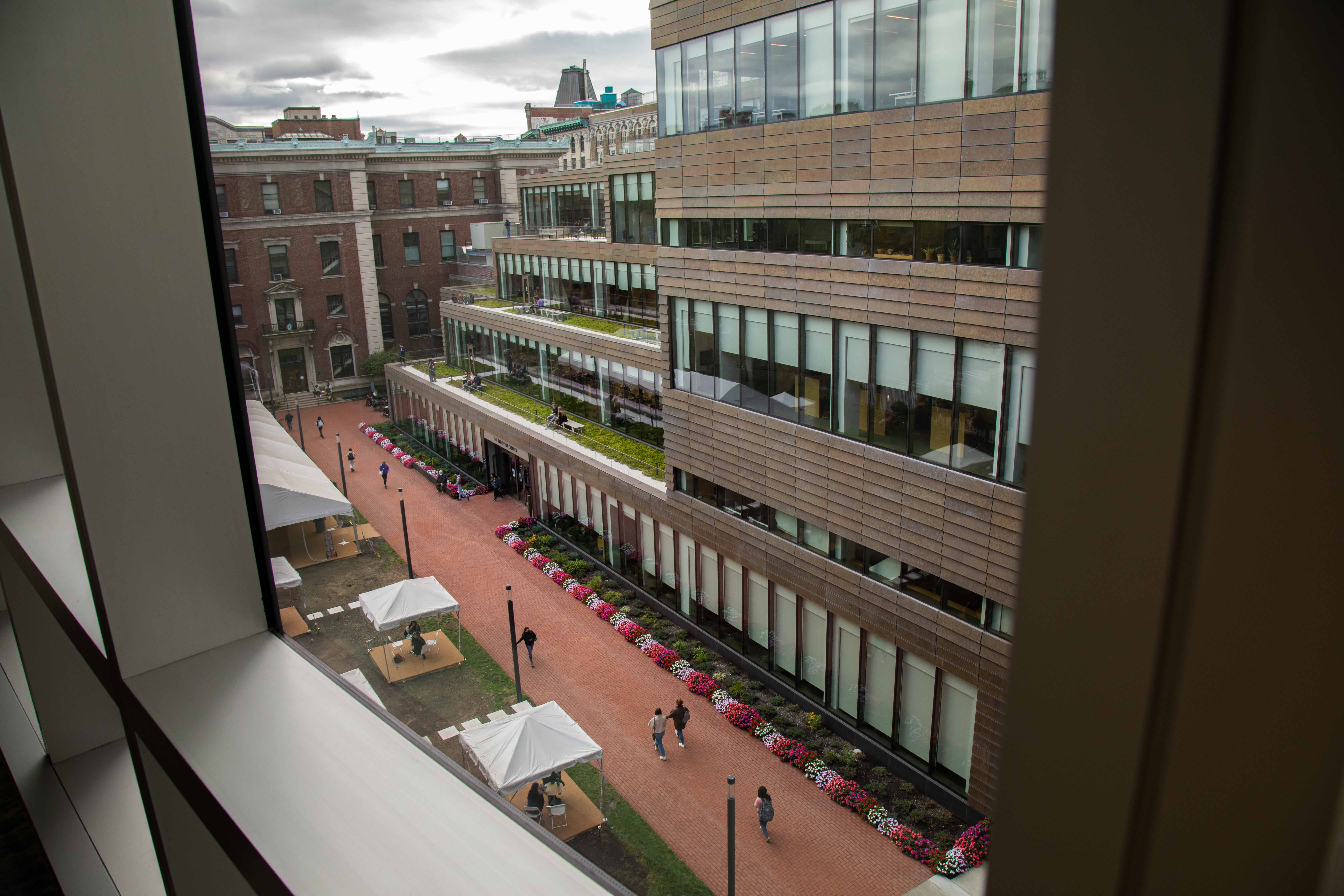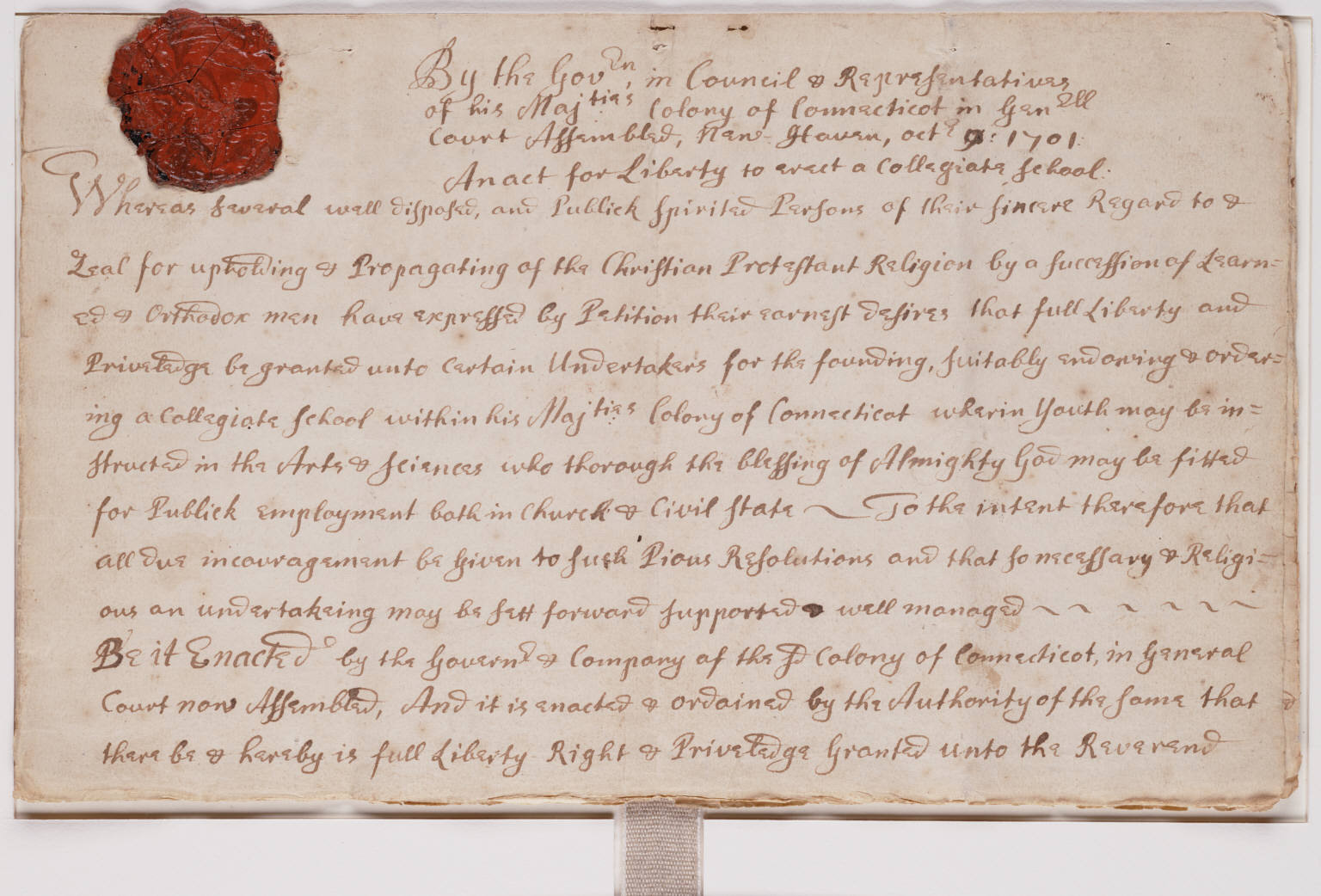|
Arthur Ross Greenhouse
The Arthur Ross Greenhouse is a greenhouse located on the fifth floor of Milbank Hall at Barnard College, New York City. Originally a rooftop garden, it is used for botanical research and hosts a collection of approximately 650 species of plants. History Origin and botanical use First established in 1897 as a rooftop garden, its facilities were upgraded for the first time in 1928 by professor Edmund Ware Sinnott, who used the greenhouse to conduct his pioneering studies on squash genetics. After Sinnott left in 1940 to become the chair of the botany department at Yale University, it continued to be used for research and teaching by both faculty and students at Barnard, though over time it deteriorated and become energy-inefficient. Replacement In 1996, trustee Arthur Ross donated $1 million to replace the greenhouse with a new, state-of-the-art facility, which was completed and dedicated in 1998. The new greenhouse is computer-controlled, with automated temperature control, ven ... [...More Info...] [...Related Items...] OR: [Wikipedia] [Google] [Baidu] |
Greenhouse
A greenhouse (also called a glasshouse, or, if with sufficient heating, a hothouse) is a structure with walls and roof made chiefly of transparent material, such as glass, in which plants requiring regulated climatic conditions are grown.These structures range in size from small sheds to industrial-sized buildings. A miniature greenhouse is known as a cold frame. The interior of a greenhouse exposed to sunlight becomes significantly warmer than the external temperature, protecting its contents in cold weather. Many commercial glass greenhouses or hothouses are high tech production facilities for vegetables, flowers or fruits. The glass greenhouses are filled with equipment including screening installations, heating, cooling, and lighting, and may be controlled by a computer to optimize conditions for plant growth. Different techniques are then used to manage growing conditions, including air temperature, relative humidity and vapour-pressure deficit, in order to provide the ... [...More Info...] [...Related Items...] OR: [Wikipedia] [Google] [Baidu] |
Milbank, Brinckerhoff, And Fiske Halls
Milbank, Brinckerhoff, and Fiske Halls are historic buildings located on the campus of Barnard College in Morningside Heights, Manhattan, New York City. The three interconnected buildings are collectively known as Milbank Hall. They were designed by Charles A. Rich (1854–1943), built between 1897 and 1898, and contain classrooms, laboratories, administrative offices and dormitory. They are four stories on a raised basement built of dark red brick with white limestone and terra cotta details. They combine Italian Renaissance massing and detail with Colonial Revival inspired features. ''See also:'' The roof of Milbank Hall houses the Arthur Ross Greenhouse. They were listed on the National Register of Historic Places in 2003. See also * Barnard Hall *Brooks and Hewitt Halls Brooks and Hewitt Halls are historic dormitory buildings located on the campus of Barnard College in Morningside Heights, New York, New York. Brooks Hall was designed by Charles A. Rich (1854–1943) and bu ... [...More Info...] [...Related Items...] OR: [Wikipedia] [Google] [Baidu] |
Barnard College
Barnard College of Columbia University is a private women's liberal arts college in the borough of Manhattan in New York City. It was founded in 1889 by a group of women led by young student activist Annie Nathan Meyer, who petitioned Columbia University's trustees to create an affiliated college named after Columbia's recently deceased 10th president, Frederick A.P. Barnard. Barnard College was one of more than 120 women's colleges founded in the 19th century, and one of fewer than 40 in existence today solely dedicated to the academic empowerment of women. The acceptance rate of the Class of 2025 was 11.4% and marked the most selective and diverse class in the college's 133-year history, with 66% of incoming U.S. students self-identifying as women of color. Barnard is one of Columbia University's four undergraduate colleges. Founded as a response to Columbia's refusal to admit women into their institution until 1983, Barnard is affiliated with but legally and financi ... [...More Info...] [...Related Items...] OR: [Wikipedia] [Google] [Baidu] |
New York City
New York, often called New York City or NYC, is the most populous city in the United States. With a 2020 population of 8,804,190 distributed over , New York City is also the most densely populated major city in the United States, and is more than twice as populous as second-place Los Angeles. New York City lies at the southern tip of New York State, and constitutes the geographical and demographic center of both the Northeast megalopolis and the New York metropolitan area, the largest metropolitan area in the world by urban landmass. With over 20.1 million people in its metropolitan statistical area and 23.5 million in its combined statistical area as of 2020, New York is one of the world's most populous megacities, and over 58 million people live within of the city. New York City is a global cultural, financial, entertainment, and media center with a significant influence on commerce, health care and life sciences, research, technology, educa ... [...More Info...] [...Related Items...] OR: [Wikipedia] [Google] [Baidu] |
Edmund Ware Sinnott
Edmund Ware Sinnott (February 5, 1888–January 6, 1968) was an American botanist and educator. Sinnott is best known for his work in plant morphology. Career Sinnott received his Bachelor of Arts (1908), Master of Arts (1910), and Doctor of Philosophy (1913), all from Harvard University. During his freshman year of college, he lived in Stoughton Hall. Sinnott studied in Australia with Arthur Johnson Eames from 1910-1911. Upon graduation, he became an instructor at Harvard, and worked with I. W. Bailey, the anatomist. From 1915-1928, he was at the Connecticut Agricultural College at Storrs, becoming Professor of Botany and Genetics. From 1928-1939, he was Professor of Botany at Barnard College, where he helped refurbish the Arthur Ross Greenhouse, and chair of the Botany Department at Columbia University (1939-1940). In 1940, he moved to Yale University to become Sterling Professor of Botany, chair of the Botany Department (1940-1956), director of the Marsh Botanical Gar ... [...More Info...] [...Related Items...] OR: [Wikipedia] [Google] [Baidu] |
Cucurbita
''Cucurbita'' (Latin for gourd) is a genus of herbaceous fruits in the gourd family, Cucurbitaceae (also known as ''cucurbits'' or ''cucurbi''), native to the Andes and Mesoamerica. Five edible species are grown and consumed for their flesh and seeds. They are variously known as squash, pumpkin, or gourd, depending on species, variety, and local parlance. Other kinds of gourd, also called bottle-gourds, are native to Africa and belong to the genus '' Lagenaria'', which is in the same family and subfamily as ''Cucurbita'', but in a different tribe. These other gourds are used as utensils or vessels, and their young fruits are eaten much like those of the ''Cucurbita'' species. Most ''Cucurbita'' species are herbaceous vines that grow several meters in length and have tendrils, but non-vining "bush" cultivars of ''C. pepo'' and ''C. maxima'' have also been developed. The yellow or orange flowers on a ''Cucurbita'' plant are of two types: female and male. The female flow ... [...More Info...] [...Related Items...] OR: [Wikipedia] [Google] [Baidu] |
Yale University
Yale University is a Private university, private research university in New Haven, Connecticut. Established in 1701 as the Collegiate School, it is the List of Colonial Colleges, third-oldest institution of higher education in the United States and among the most prestigious in the world. It is a member of the Ivy League. Chartered by the Connecticut Colony, the Collegiate School was established in 1701 by clergy to educate Congregationalism in the United States, Congregational ministers before moving to New Haven in 1716. Originally restricted to theology and sacred languages, the curriculum began to incorporate humanities and sciences by the time of the American Revolution. In the 19th century, the college expanded into graduate and professional instruction, awarding the first Doctor of Philosophy, PhD in the United States in 1861 and organizing as a university in 1887. Yale's faculty and student populations grew after 1890 with rapid expansion of the physical campus and sc ... [...More Info...] [...Related Items...] OR: [Wikipedia] [Google] [Baidu] |
Arthur Ross (philanthropist)
Arthur Ross (November 25, 1910 – September 10, 2007) was an American businessman and philanthropist. He was known for his philanthropic contributions to the arts and environmental causes, including New York City's Central Park, specifically the Arthur Ross Pinetum. Early life Arthur Ross was born in Manhattan, New York City, on November 25, 1910. Ross originally enrolled at the University of Pennsylvania in Philadelphia. But he transferred to Columbia University during the Great Depression to support his family. He graduated from Columbia University in 1931. He held a number of jobs during the Depression and his college years, including a shirt salesman at Macy's. Ross joined the United States Navy during World War II. He served as a lieutenant commander. His tours of duty took him to Ecuador and Panama for several years. Career Arthur Ross began his career in 1932 at Sutro Brothers & Company, a Wall Street brokerage firm. He left the company in 1938 and joined Central Na ... [...More Info...] [...Related Items...] OR: [Wikipedia] [Google] [Baidu] |
Amorphophallus Titanum
''Amorphophallus'' (from Ancient Greek , "without form, misshapen" + ''phallos'', "penis", referring to the shape of the prominent spadix) is a large genus of some 200 tropical and subtropical tuberous herbaceous plants from the '' Arum'' family (Araceae), native to Asia, Africa, Australia and various oceanic islands. A few species are edible as "famine foods" after careful preparation to remove irritating chemicals. The genus includes the Titan arum (''A. titanum'') of Indonesia, which has the largest inflorescence of any plant in the genus, and is also known as the 'corpse flower' for the pungent odour it produces during its flowering period, which can take up through seven years of growth before it occurs. History The oldest systematic record of the plants was in 1692, when Van Rheede tot Drakenstein published descriptions of two plants. The name "''Amorphophallus''" was first mentioned in 1834 by the Dutch botanist Blume.Hetterscheid, W., & Ittenbach, S. (1990). Everyth ... [...More Info...] [...Related Items...] OR: [Wikipedia] [Google] [Baidu] |
Brooklyn Botanic Garden
Brooklyn Botanic Garden (BBG) is a botanical garden in the borough of Brooklyn, New York City. It was founded in 1910 using land from Mount Prospect Park in central Brooklyn, adjacent to Prospect Park and the Brooklyn Museum. The garden holds over 14,000 taxa of plants and has nearly a million visitors each year. It includes a number of specialty "gardens within the Garden", plant collections, the Steinhardt Conservatory that houses the C. V. Starr Bonsai Museum, three climate-themed plant pavilions, a white cast-iron-and-glass aquatic plant house, and an art gallery. History Site The impetus to build Prospect Park stemmed from an April 18, 1859, act of the New York State Legislature that empowered a twelve-member commission to recommend sites for parks in the City of Brooklyn. In February 1860, a group of fifteen commissioners submitted suggestions for park locations in Brooklyn, including a plot centered on present-day Mount Prospect Park and bounded by Warren St ... [...More Info...] [...Related Items...] OR: [Wikipedia] [Google] [Baidu] |
Indonesian Language
Indonesian ( ) is the official language, official and national language of Indonesia. It is a standard language, standardized variety (linguistics), variety of Malay language, Malay, an Austronesian languages, Austronesian language that has been used as a lingua franca in the multilingual Indonesian archipelago for centuries. Indonesia is the fourth most list of countries by population, populous nation in the world, with over 270 million inhabitants—of which the majority speak Indonesian, which makes it one of the most List of languages by total number of speakers, widely spoken languages in the world.James Neil Sneddon. ''The Indonesian Language: Its History and Role in Modern Society''. UNSW Press, 2004. Most Indonesians, aside from speaking the national language, are fluent in at least one of the more than 700 indigenous languages of Indonesia, local languages; examples include Javanese language, Javanese and Sundanese language, Sundanese, which are commonly used at home a ... [...More Info...] [...Related Items...] OR: [Wikipedia] [Google] [Baidu] |






_5.jpg)

